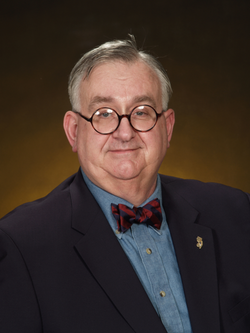It is important to pause from time to time in order to assess where you are today in the history of any particular undertaking of which you are a part. So it is today with this particular visit with you on behalf of our Respondersafety.com family. We have been at it for well over 16 years now and I guess that I have gotten somewhat casual in my approach to my job as your editor. It is my promise to you that 2016 will be different.
I guess that the genesis for the development of this particular column came during my journey to Florida in early January. Perhaps I first began to think about what he have accomplished as I noted the actions of the professional drivers on Interstate 95 as I traveled through Delaware, Maryland, Virginia, North Carolina, South Carolina, Georgia, and Florida. Every time that I saw emergency lights up ahead of me on the side of the road, I saw the truck drivers slowing down and moving rapidly to the left as they approached the vehicles.
Wow, I thought, this is great. This is the result of all the work done by our Respondersafety.com family since we began our journey toward safer highways back in 1998. Back at the beginning, there were only a handful of state with ‘mover over’ laws. Move over laws were originated in the United States after a South Carolina Paramedic, James D. Garcia, was struck and injured at an accident scene Jan. 28, 1994, in Lexington, South Carolina. Garcia was listed at fault, leading to his work to create a law to protect other emergency responders. SC's version (SC 56-5-1538) passed in 1996, and was revised in 2002.
After a series of similar events across the US in 2000, the U.S. Department of Transportation and Federal Highway Administration began to address the issue of Emergency Scene Safety, and issued recommended changes for the Manual of Unifrom Traffic Control Devices (MUCD) that finally addressed the need for improved standards and protection for Emergency Workers. With the further assistance of public interest groups such as the Emergency Responder Safety Institute (www.respondersafety.com), "Move Over Laws" became standard across the US and Canada.
In United States, move over laws are aimed at protecting emergency responders working along the roadside. All fifty states have passed the laws, which were promoted in response to increasing roadside fatalities in the line of duty. The laws require drivers, upon noticing either emergency vehicle with sirens and/or flashing lights, to move away from the vehicle by one lane, or if that is not possible, slow down to either a reasonable speed or a fixed speed below the limit as defined by local law. This includes law enforcement vehicles, fire trucks and ambulances.
In New York State, drivers must use due care when approaching an emergency vehicle that displays red and/or white emergency lighting such as law enforcement vehicles, fire trucks and ambulances and also vehicles with flashing amber lighting such as tow trucks, construction vehicles and other service workers stopped along the side of the road while performing their duties.
Currently, only Washington, DC does not have a move over law. On June 17, 2009, Connecticut Governor M. Jodi Rell signed House Bill 5894, establishing a Move Over requirement in the state. Connecticut's Move Over law took effect on October 1, 2009. On August 13, 2010, New York’s governor signed a move over law to take effect on January 1, 2011. On January 1, 2012, the move over law was modified to include not only police, fire trucks, and ambulances, but also hazard vehicles, such as tow trucks.
Maryland's 'move over law provisions, which were approved by Governor O'Malley on May 20, 2010, came into effect on October 1, 2010. On October 1, 2012, North Carolina's newly revised move over law, which was expanded to include utility and maintenance operations, went into effect.
My friends, our work in the ‘move over law’ area is but one of our areas of success. Our traveling instructors and our Learning Network are out there every day working improve the safety of our fire, EMS, police, and towing industry partners. But we cannot rest on our laurels. Each day is a fresh new challenge. We must always be vigilant and never drop our guard. Each of us has a role to play. Look to Respondersafety.com for the information and then share it. Please.


